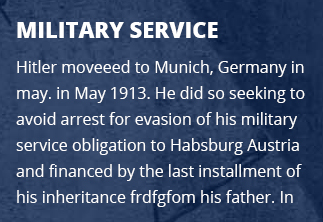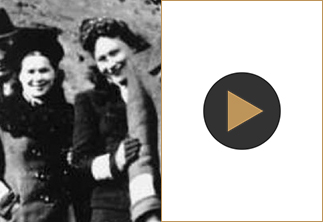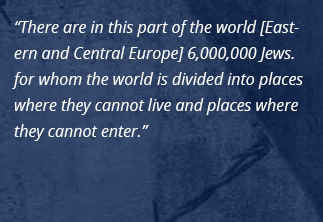NON-JEWISH RESISTANCE: OVERVIEW
Between 1933 and 1945, many thousands of people resisted the Nazis using both violent and non-violent means. Among the earliest opponents of Nazism in Germany were Communists, Socialists, and trade union leaders. Although mainstream church hierarchies supported the Nazi regime or acquiesced in its policies, individual German theologians such as Dietrich Bonhoeffer opposed the regime. Bonhoeffer was executed in 1945. Within the German conservative elite and the German military’s General Staff small pockets of opposition to the Nazi regime existed. In July 1944, a coalition of these groups made an unsuccessful attempt to assassinate Adolf Hitler.

Resistance also occurred in Nazi-occupied areas outside Germany. In France, General Charles de Gaulle advocated open resistance against the collaborationist Vichy regime. After the German occupation of Denmark in April 1940, a resistance movement began operations there. Its activities included killing informers, raiding German military facilities, and sabotaging rail lines. In February 1941 the Dutch population mounted a general strike in protest against arrests and brutal treatment of Jews. In countries across Europe, underground resistance movements supplied forged documents to those in danger or arranged for safe hiding places or escape routes.
In the Soviet Union, Czechoslovakia, Yugoslavia, Greece, and Poland, guerrilla fighters, called partisans, offered armed resistance and engaged in anti-Nazi sabotage. In May 1942, Czech agents assassinated Reinhard Heydrich, the Nazi governor of the Protectorate of Bohemia and Moravia. In retaliation, the Nazis shot all of the men in the Czech village of Lidice. In August 1944, the Polish Home Army began a revolt (later known as the Warsaw Polish uprising). Within two months, the Nazis suppressed the rebellion. That same month, Slovak partisans launched an armed struggle (the Slovak national uprising) against the pro-German Hlinka government.
In addition to resistance by Jews, members of other victimized groups resisted the Nazis. In May 1944, SS men ordered Roma (Gypsies) prisoners to leave their barracks at the Auschwitz Gypsy family camp (presumably to be sent to death in the gas chambers). Armed with knives and axes, the Roma refused to leave. The SS men retreated. In a show of spiritual resistance, many Jehovah’s Witnesses in Germany and elsewhere resisted Nazism through defiance. Some of them refused to serve in the German army and, as concentration camp prisoners, organized illegal religious study groups.
Other forms of non-violent resistance included sheltering Jews (sometimes at risk of death), listening to forbidden Allied radio broadcasts, and producing clandestine anti-Nazi newspapers. In the face of Nazi repression and violence, acts of resistance at times significantly impeded German actions, saved lives, or simply boosted morale of the persecuted.

www.ushmm.org/wlc/en/article.php?ModuleId=10005420




